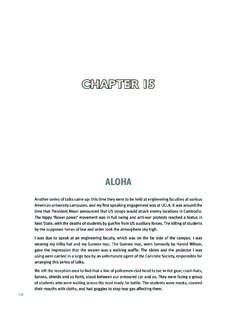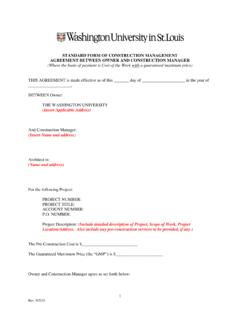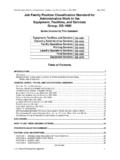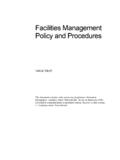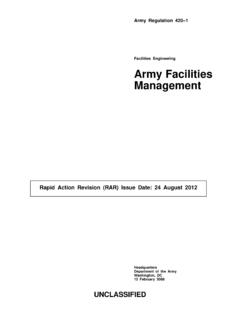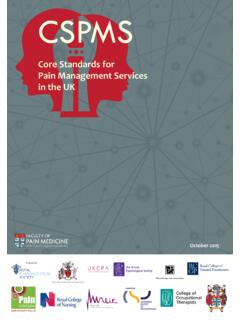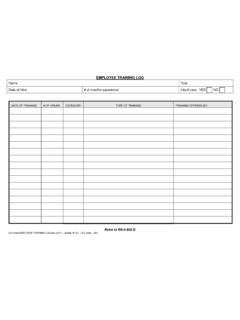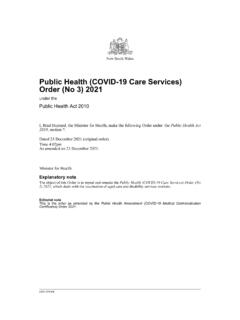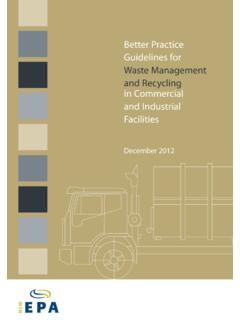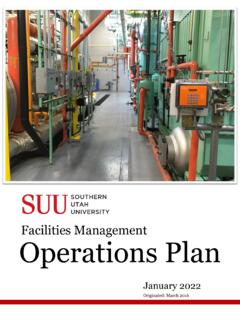Transcription of A Practical Introduction to Facilities Management
1 A Practical Introduction to Facilities ManagementA Practical Introduction to Facilities ManagementIan C. Barker MCIOBP ublished byWhittles Publishing,Dunbeath,Caithness KW6 6EG,Scotland, 2013 Ian C. BarkerISBN 978-184995-096-1 All rights part of this publication may be reproduced,stored in a retrieval system, or transmitted,in any form or by any means, electronic,mechanical, recording or otherwisewithout prior permission of the publisher and authors have used their best efforts in preparing this book, but assume no responsibility for any injury and/or damage to persons or property from the use or implementation of any methods, instructions, ideas or materials contained within this book.
2 All operations should be undertaken in accordance with existing legislation and recognized trade practice. Whilst the information and advice in this book is believed to be true and accurate at the time of going to press, the authors and publisher accept no legal responsibility or liability for errors or omissions that may have been by Exeter Premedia, IndiaPrinted and bound invContentsList of theory and information slots xiiiAbbreviations used xvChapter 1 Getting started 1 What is Facilities Management ? 1 The value of experience 2 The trainee 4 Aims and objectives: setting out your stall 5 Identify 5 Evaluate 5 Plan 10 Action 12 Review 13 Getting started 14 Chapter 2 The basics 15 Tools of the trade 15 Computer systems and software 15 Phones
3 16 Administration structure 16 Networking 18 Being a newbie 19 Having a clear out 19 The quick fix 20 Understanding your portfolio 21 Physical assets 22 Understanding your service and how it f its onto your site 24 ContentsviChapter 3 Managing people: staff and customers 27 Managing your staff 27 Choose your staff well: recruitment 28 Communication with your staff 30 Find out what makes them tick 33 Dangle the carrot 34 Review 37 What about you?
4 37 Are you up to the job? The S curve and learning cycles 37 Your training 39Do you have the necessary support structure? 39 Are you adequately resourced? 39 Teamwork: what makes a good team? 40 Staff training 42 Ability of staff to undertake their duties effectively 42 People must want to progress 43 Creation of stability and succession 44 Ability to meet legislative requirements 45 Ability to overlap services 45 How do you get staff to undertake training? 45 Rewarding progress 46 Fair and equal pay and training 49 Customer service 50 Creating a good impression 50 Providing good customer service 51 Practising what you preach 55 Development of customer services 55 Chapter 4 Policies, strategies, procedures, risks and liabilities 59 Policies 59 Strategies 61 What is a strategy?
5 61 What are the key points of a strategy? 62 Procedures 64 Guidance notes 65 Forms 66 Administrative f low 66 Monitoring and managing 67 What are you managing and monitoring? 68 Where are you are managing and monitoring? 68 When will you manage and monitor? 69 How will you manage and monitor? 70 Why are you managing and monitoring? 71 ContentsviiQuality Management 71 What is quality ? 72 What is quality Management ? 73 Bench-marking 75 Why is quality so important?
6 76 Risks and liability 77 What is compliance? 77 Statutory requirements 78 Risks with new builds and defect periods 84 User requirements 87 Heating systems 87 Fire legislation 88 Emergency procedures 91 Risks to property 91 Building maintenance 92 Staff 97 Financial risks 99 Making mistakes 101 Chapter 5 Outsourcing of services or in-house staff? 102 Reasons to outsource services 102 Does the service work? 102 Does the service f it the requirements of the site? 103Is the service f inancially sound? 103Is there a sound reason for change? 104 Service drift 104 Outsourcing: advantages and disadvantages 106 Advantages of outsourcing 108 Disadvantages of outsourcing 108 Specif ications 109 Types of specif ication 110 Risk 112 The education sector.
7 The learner experience and outsourcing 113 Working with contractors 114 Choosing your contractors 115 Performance and review 116 Quality 116 Waste 118 Health and safety 119 Contractor f iles 120 Procurement routes for FM 120 ContentsviiiChapter 6 In-house teams 124 Maintenance team 124 Specialisms 125 Workload 125 Performance 127 Contracting in or out?
8 128 Site supervision team 129 Timing of service 131 Integration 131 Safety and security 132 Resourcing 132 Core times and resourcing 133 The friendly service 134 Helpdesk team 134 The hub for your department 135 The place to report defects or problems 135 Customer service department 136 Audit department 136 Helpdesk software specif ication 137 System requirements 138 Post team 140 Deliveries out to departments 140 Parcels and deliveries 141 Cleaning team 142 Timing 142 Supervision 144 The poisoned chalice 144 Value added.
9 Sustainability and security 145 Consumables 146 Security team 146 Safeguarding 147 Intruders 147 Drugs and alcohol 148 Closed-circuit television 149 Patrols 149 Statistics 150 Chapter 7 Maintenance including new builds and space Management 152 Types of maintenance 152 Reactive maintenance 152 Planned maintenance 154 Planned preventative maintenance 155 ContentsixPlanned programme and planned survey 158 What is a planned survey document?
10 158 Planned programme 161 Space Management 161 New builds and maintenance 163 Pre-build 163 Heating 164 Ventilation and chilling/cooling 166 Electricity use and new technologies 167 Disputes 167 Chapter 8 Sustainability, use of resources and sustainable technologies 169 What is sustainability? 169 Improving the sustainability of your organisation 171 Identif ication of resources used 171 Conversion of resource use into a carbon footprint 172 Setting bench-marks and targets 172 Setting future targets 173 Reporting progress and reviewing results 173 Sustainability.

